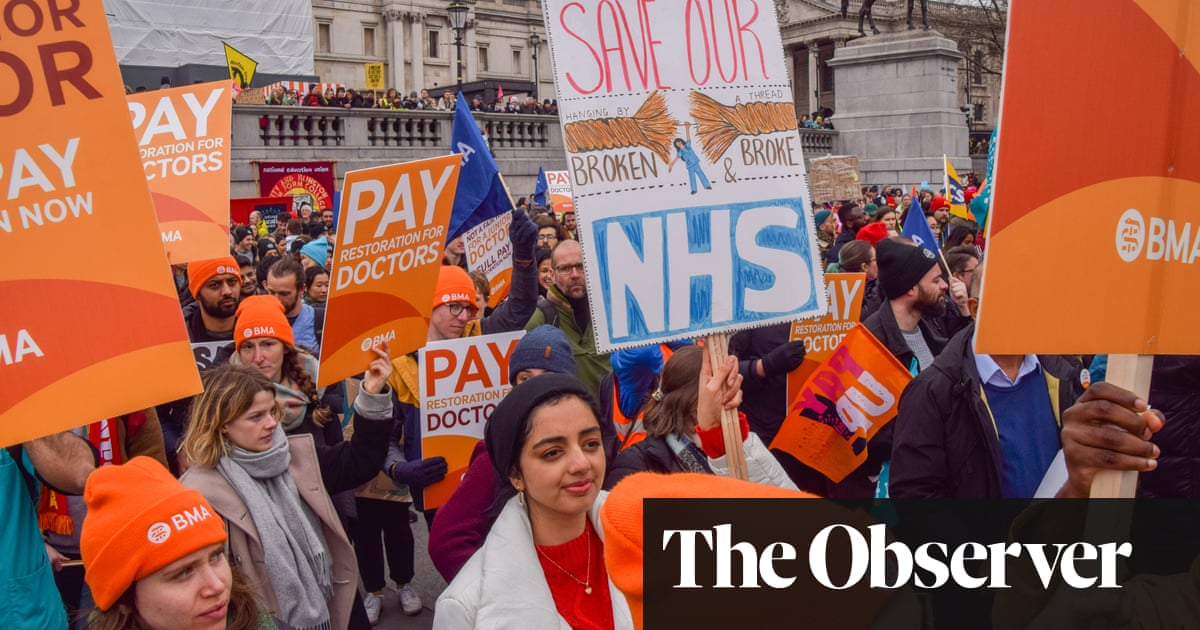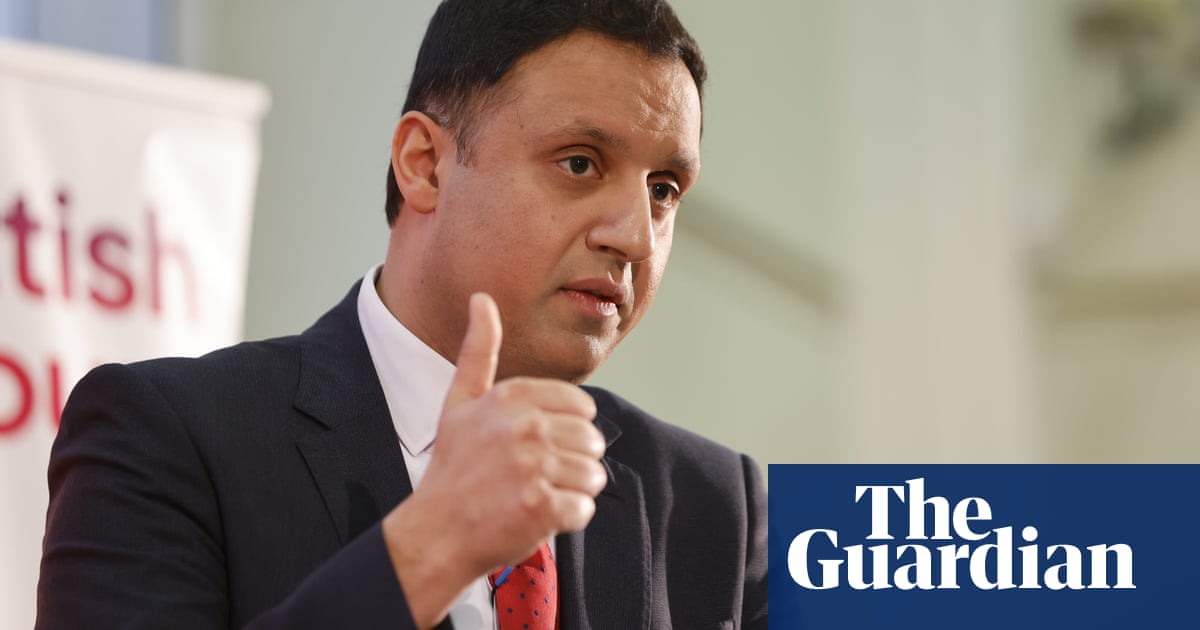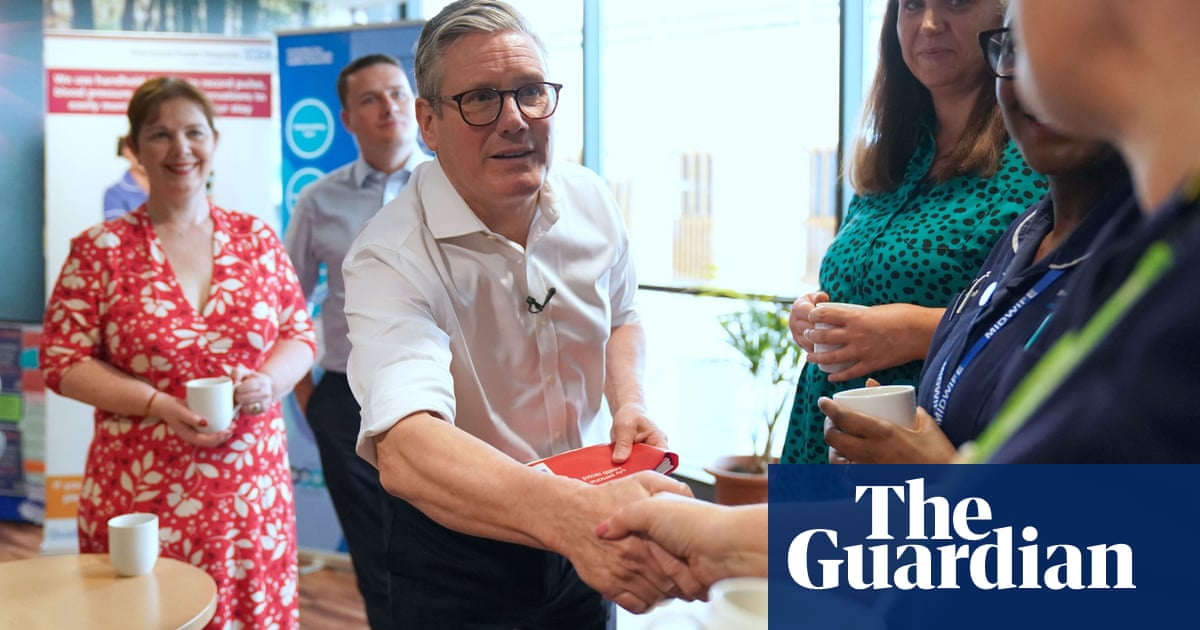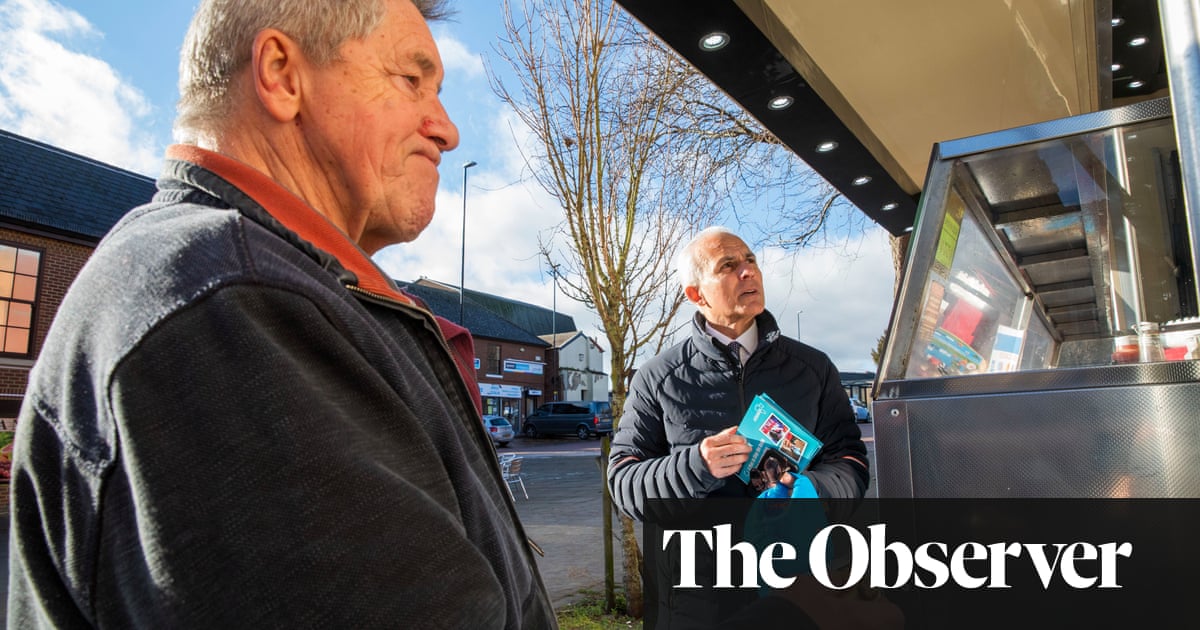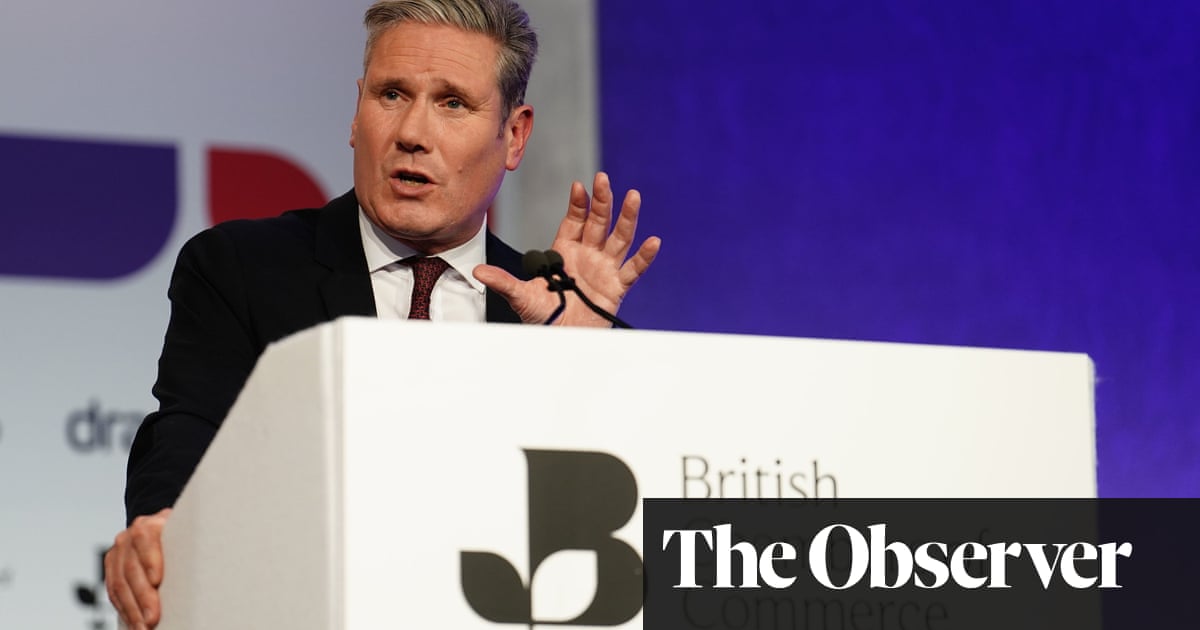
With a brisk and bracingly cold sea breeze buffeting the red, green and yellow trade union flags in bright sunshine, the protest at P&O’s Scottish ferry port had the air of a labour movement revivalist rally.
Union leaders railed against P&O’s bosses and the Conservative government in Westminster, demanding legal action and boycotts, applauded by Labour’s leader in Scotland, Anas Sarwar, who then led the march to the shuttered P&O terminal at Cairnryan on the Irish Sea.
That revivalist air suits Sarwar. His party’s fortunes appear to be improving, on the eve of his first electoral test as Scottish Labour leader, the local elections in May. For the first time since 2017, opinion polls this year have consistently shown Labour coming second in Scotland, replacing the Tories as the main challengers to Nicola Sturgeon’s Scottish National party.
Party leaders are habitually cautious about snapshot polls; they capture mood, not voters’ behaviour or turnout. However, one poll has particularly excited Sarwar. Last week, Survation put Labour on 27% for a Westminster election (excluding undecideds) – the highest it has polled for five years. During the worst months under Jeremy Corbyn’s leadership, Scottish Labour’s support slumped to 13%.
With those kind of numbers, Sarwar believes, Labour could regain a host of Scottish seats at the next general election. Every extra point north of 27% means several more Commons gains, he believes, and that boosts Keir Starmer’s chances of becoming prime minister.
Sarwar has argued vociferously that Scotland was Labour’s original “red wall”: it was where the party’s support collapsed first, at the 2015 general election, holding only one Westminster seat in a humiliating rout at the hands of the SNP.
Survation’s recent poll, commissioned by Ballot Box Scotland, a political blog, also found that for May’s council elections, Labour attracted 23% of the vote, against 18% for the Tories, and 44% for the SNP.
“What I’m confident about is that Scottish Labour is back on the pitch, that Scottish Labour is changing, and that that is starting to resonate with people again,” Sarwar told the Observer, as the P&O protests continued behind him. “There’s still a very long way to travel. The latest trends are positive, but I’m not in this to come second. I’m in this to come first.”
But, say Labour insiders and the elections expert Sir John Curtice, this modest Labour renaissance is coming from anti-independence swing voters disillusioned with the Tories under Boris Johnson following the partygate scandals at Downing Street. There is no sign the prime minister is enjoying a boost in support because of Russia’s invasion of Ukraine.
Labour strategists are cautious about their chances on 5 May, when the party hopes to improve on the 262 seats won in the 2017 Scottish local elections. Scotland uses the single transferrable vote system of proportional representation in council elections, which asks voters to rank candidates in order of preference.
SNP supporters have the lowest propensity to vote, but unless nationalist voters stay at home in very large numbers, Labour can only cannibalise votes from other pro-UK parties to succeed.
It needs to see floating unionist voters switch to Labour, or for Tory and Liberal Democrat supporters to vote tactically to keep pro-independence SNP and Green candidates at bay. It is very rare for SNP voters to lend Labour their second or third votes; those are most likely to go to the Scottish Green party, which is in coalition with the SNP at Holyrood.
Sturgeon is facing significant and challenging questions about her government’s economic competence: there have been disclosures about costly delays to two vitally important new Hebridean ferries, anger over councils being short-changed in the recent Scottish budget and local services being cut.
But even that is unlikely to dent the SNP’s vote next month, Curtice believes. Repeated attitudinal polling shows that in Scotland a voter’s preferences are almost entirely defined by where they stand on the constitution. The normal policy and service delivery disputes are “irrelevant” to most voters, he said.
Curtice argues that Scotland’s political landscape has strong parallels with the constitutional divisions underlying Northern Irish politics, where no Irish nationalist could ever vote for the Democratic Unionist party. “It’s all now a quasi-referendum,” Curtice said. “That division is even sharper now than the one over Brexit south of the border in 2019.”
Standing alongside Sarwar in the sunshine at Cairnryan was Elaine Murray, the outgoing Labour leader of Dumfries and Galloway council, where 10 Labour councillors shared power with 10 SNP councillors to keep the Tories, which were the largest party with 16 seats, out of office.
She is retiring in May but sees, she says, consistent evidence of unionist voters switching back to Labour. Despite heavy pressure from Labour’s left, including whispering from some of Starmer’s advisers, to be more accommodating over the case for an independence referendum, Sarwar has taken a hardline stance against independence.
Combined with Sarwar’s much greater visibility and name-recognition, as the son of the UK’s first Muslim MP, Mohammed Sarwar, Murray thinks voters are shifting markedly away from the Tories.
“On the doorstep, things are improving,” she said. “We’re seeing people who left us in 2016 and 2017 coming back. It is because of Boris.”




